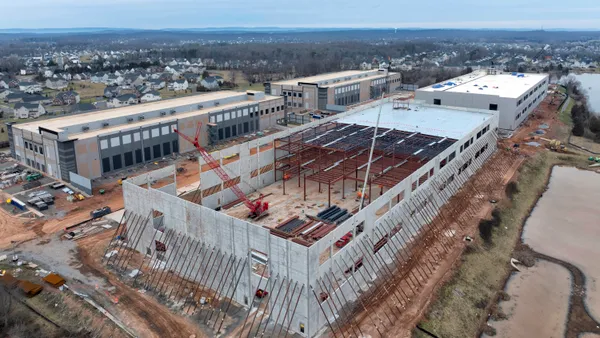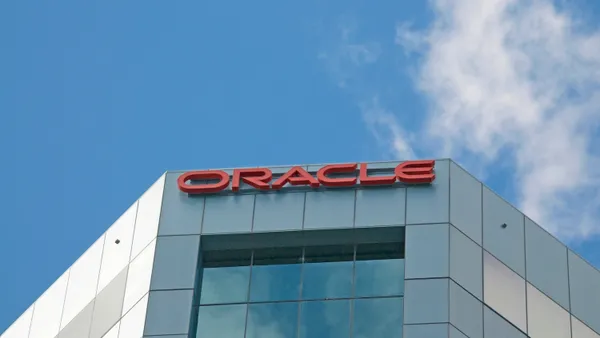The global COVID-19 pandemic changed consumers' behavior, expectations and preferences in ways that none of us could have anticipated. Digital touchpoints became far more important in purchasing journeys for everything from automobiles to financial services, and from consumer packaged goods to real estate. Meanwhile, as brands rushed to provide their customers with personalized, seamless, user-friendly and intuitive online experiences, competition in the digital space has heated up.
Though we sometimes think of the cloud as "modern," the oldest cloud-hosted technology offerings have now been available for more than two decades. In fact, the Software-as-a-Service (SaaS) distribution model has become a legacy approach, and the multitenancy that it entails comes with several major disadvantages for its customers, especially if these are companies seeking to provide their customers with highly personalized digital experiences across multiple channels and touchpoints. Simply put, SaaS is no longer the best-fit model for brands that want to excel at e-commerce.
To win customers' loyalty in 2022 and beyond, retailers and other companies that sell goods and services online will need to architect next-generation e-commerce applications that are fast and agile enough to adapt to increasing demands without sacrificing customizability and control. In a marketplace that’s growing more and more competitive, the only way to achieve this aim is to adopt a cloud-native approach. Because cloud-native technologies speed time to market, accelerate development velocity and improve operational efficiencies, they're helping leading brands pull further ahead of the pack. And because they enable organizations to create unique, custom-tailored digital experiences, cloud-native technologies make it possible for innovative brands to set themselves apart from the competition.
Cloud-native Technologies Give Customer-Centric Businesses an Edge in Today's Marketplace
During the pandemic’s early days, when lockdowns and quarantines were taking place all over the world, online was the only place where many consumers could shop. Brands that were able to offer top-notch e-commerce experiences, with fast page load speeds, attractive features and standout design instantly gained larger audiences and increased market share. Even now, many months later, retailers — as well as other companies using e-commerce channels — are increasing their strategic focus on improving in this area.
"Today's consumers have less brand loyalty than people did in the past," says Johnn Tinch, Worldwide Director of Technical Sales at HCL Software. "If you stop innovating, people will stop coming to your site. And shoppers are driven by different cultural forces, too. The most successful brands are able to personalize the experiences they offer so that they’re different from everyone else's. They’re able to create brand stories and interweave those stories with the digital experiences and content they serve up. A wonderful web experience is a little like looking into a store window, but it’s also a reflection of a brand’s core identity."
Because they're based on commodity platforms, SaaS solutions cannot provide these sorts of distinctive, one-of-a-kind experiences.
"When you’re reliant on SaaS, you'll always be following the herd," Tinch adds. "You'll get access to every piece of differentiating technology at the same time that everyone else does."
Meeting Customers Where They Are
Containers, Kubernetes and other cloud-native technologies offer many of the same benefits that SaaS solutions do. They make it possible to scale services automatically to meet increases in traffic or demand — even if the spikes are unexpected. They also support faster time-to-market, which enables the business to roll out new functionalities at speed.
What's different with cloud-native is that you're no longer constrained by the limitations of what's available in the SaaS platform. Instead, your team can take any functionality provided by the software and customize it. Cloud-native architectures are comprised of small modular components connected via APIs, so it’s quick and easy to change them. This gives the business enhanced agility, enabling you to experiment often and deploy frequently.
API-driven architectures also make it possible to use the same back-end commerce and content systems across a broad array of channels and touchpoints. These can include websites, social media platforms, in-store experiences, third-party marketplaces, and even emerging technologies like Internet of Things (IoT)-based customer analytics. This means it's possible to provide your customers with truly seamless omnichannel experiences. And because cloud-native architectures are so flexible, it’s possible to adopt the latest advances and innovations as soon as they become available.
Headless E-commerce Architectures are Futureproofing Digital Customer Experience
In headless commerce architectures, front- and back-end systems are designed to be independent of one another and communicate via APIs. This approach gives companies the freedom to innovate without the need to relinquish customizability and control. It’s easy to make changes, which supports experimentation and continuous improvement. Layer in advanced technologies like behavioral analytics, and it becomes possible to understand your customers’ preferences and adapt to meet them on the fly.
At HCL Software, Tinch works with an innovation team that’s expressly focused on providing the capabilities that customers want to see. The speed at which cloud-native technologies have enabled his team to innovate is truly unprecedented.
"We've had instances where we’ve worked on a proof-of-concept with a customer or partner, and we’ve been able to deliver a new functionality within one to two months. From a release cycle perspective, it's pretty amazing," he concludes.










